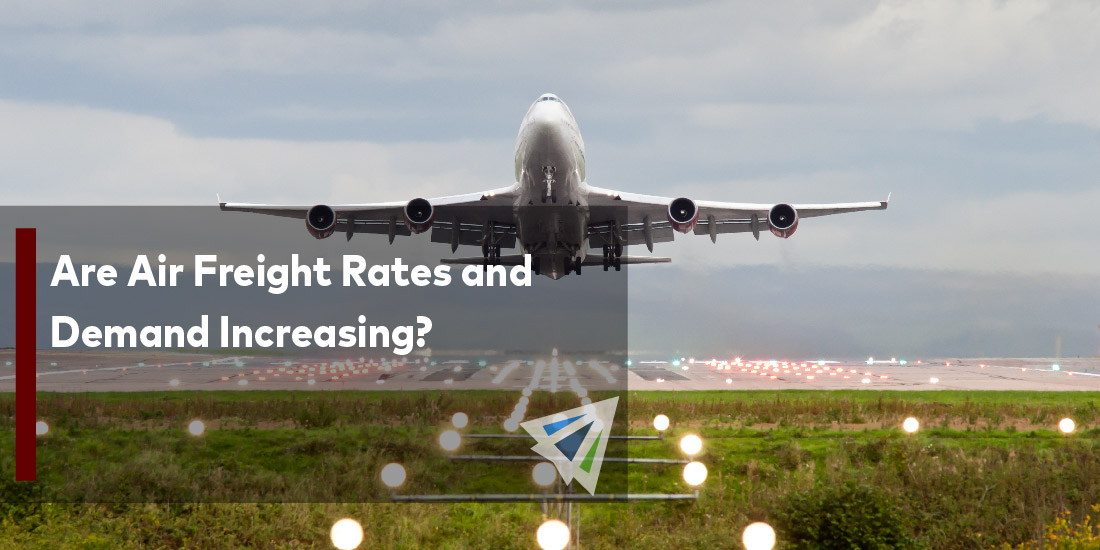Despite the traditionally quiet summer months, demand for and rates for air freight transportation are nevertheless rising. Strong e-commerce fulfillment from China and companies pushing ahead orders for the winter holidays in anticipation of rising costs, capacity constraints, and increased ocean shipping delays are the main causes of this surge.
Global Events Alter Port Congestion
Port productivity has been significantly impacted by the Middle East conflict-related closure of container lines’ Red Sea shortcut, particularly affecting major Asian and Middle Eastern origins. Increased air cargo volumes to Europe as a result have had a knock-on effect on the logistics sector.
Online retailers based in China, such Shein, Temu, and Alibaba, have emerged as major players in the air cargo transportation industry, especially on the China-Europe and trans-Pacific westbound lanes. These e-commerce behemoths don’t experience the usual seasonal changes in delivery volume, unlike traditional merchants. According to the International Air freight Association (TIACA), e-commerce currently accounts for up to 70% of air freight on trans-Pacific routes and around 20% of all air cargo volumes worldwide.
Trends Towards Air Freight Impact Pricing & Capacity
Experts in air shipping predicted volume growth of 3.5% to 4.5% for the year, but real chargeable weight has increased by double digits for six months running. May saw a 12% increase in demand year over year. The market is still strong despite a minor decline during the first week of June. Despite a forecast slowdown in the second half, the International Air Transport Association (IATA) forecasts a 5% gain in demand for the entire year.
The state of the world economy also favors air cargo. April saw a rise in the Purchasing Managers’ Index for new export orders in global manufacturing for the third straight month, and despite some slowing, industrial production is still rising.
Disruptions to ocean transportation have forced companies to switch shipments to air freight, which has increased prices even further. Container prices have reached previously unheard-of heights due to problems including port congestion and ship rerouting around Africa. Trans-Pacific and Asia-Northern Europe rates, for example, have increased by 50% since April and by almost three times since the previous year.
Popularity of Air Freight Requires Planning Ahead
Businesses are also shipping ahead of schedule in order to refill inventory after the outbreak and to prevent possible rises in U.S. tariffs on Chinese goods. Reductions in inventory levels recorded by major retailers such as Walmart, Target, and Amazon indicate the end of the U.S. destocking cycle and increase current booking levels.
Port congestion and rerouting around the Red Sea have resulted in a considerable increase in air freight rates from Asia to Europe. For example, in May, rates from Southeast Asia to Europe increased 34% year over year, while rates in North America increased 43%. In addition, outbound rates from Shanghai increased by 38% over the prior year.
Air freight capacity is still being impacted by the growth of e-commerce. Air exports from Shanghai and Hong Kong are dominated by platforms like Alibaba’s Cainiao, which use a large amount of cargo hold space. As a result, general cargo with lower yield is now being trucked to alternate airports in Malaysia, Thailand, and Vietnam.
E-commerce and high-tech products are driving up demand for air freight along the China-to-Latin America corridor. May’s spot rates for air cargo were more than twice as high as May 2019’s, with rates from China to Brazil being far higher than rates to the US.
Summary
To summarize, the air freight industry is experiencing high demand and rates due to interruptions in maritime shipping and e-commerce. Air cargo continues to be an essential part of global supply chains as firms traverse these difficulties, and trends suggest that it will continue to develop and adapt to changing market dynamics.
When talking about air freight rates and demand with our pricing and operations team at Interlog, they noted that it’s typical for air freight rates to fluctuate throughout the year and be different from the week prior. For example, air freight rates from last week have looked different this week, and that’s likely to continue throughout the year.
Do you have air shipments that you’re looking for rates/alternative options on? Let’s talk!
